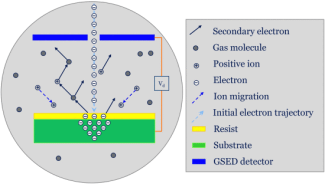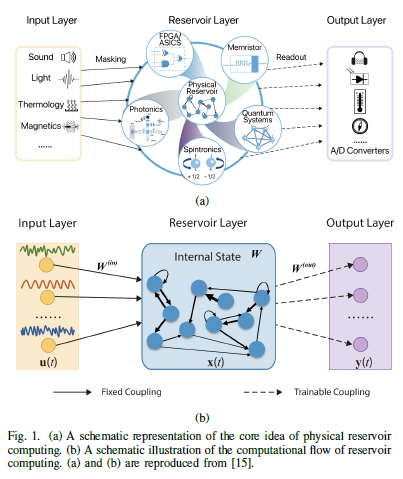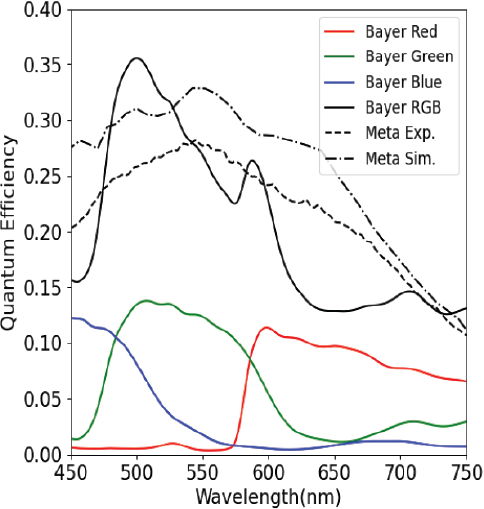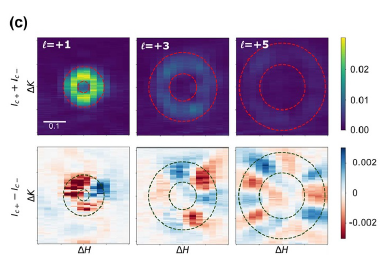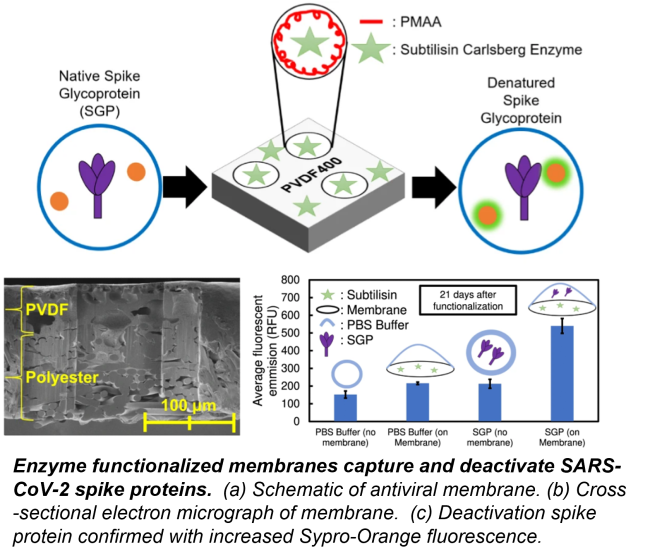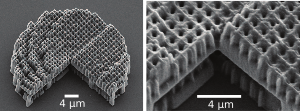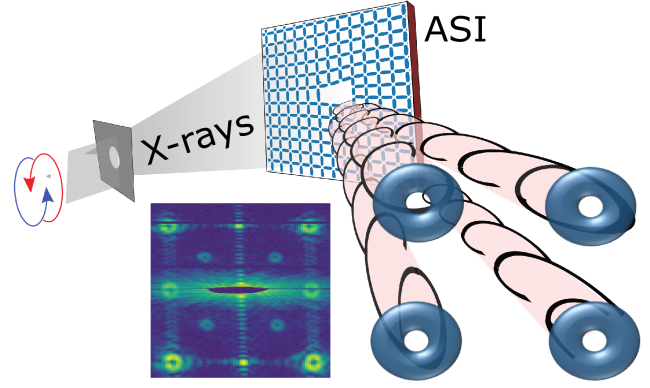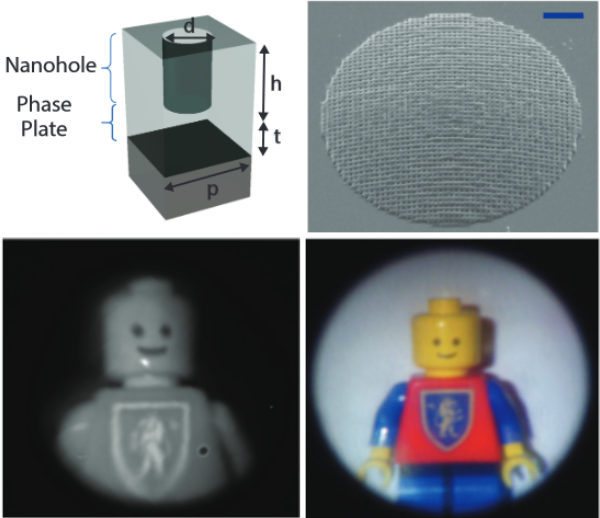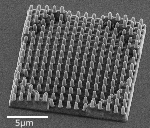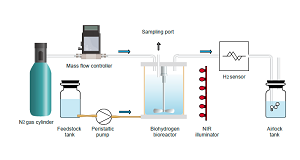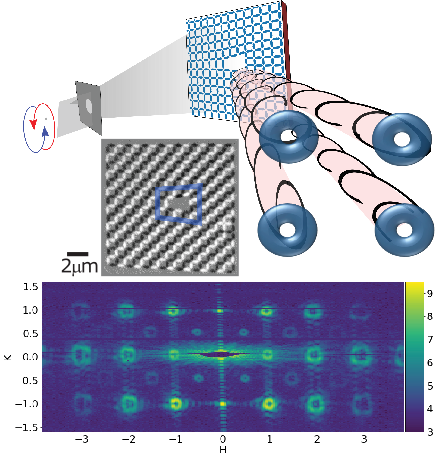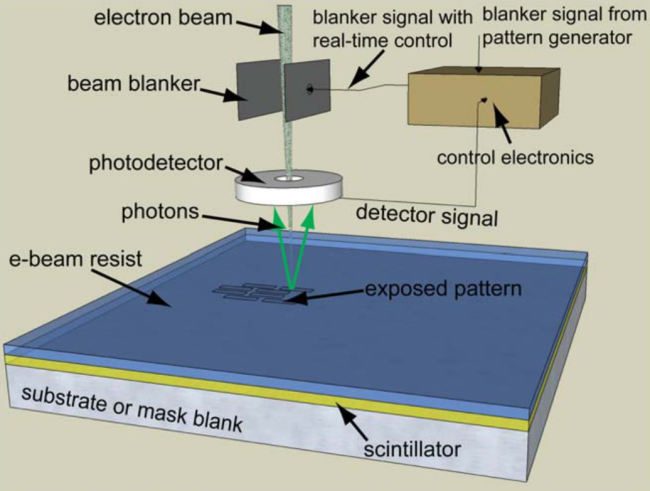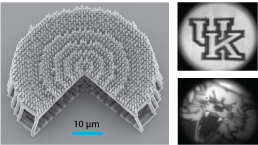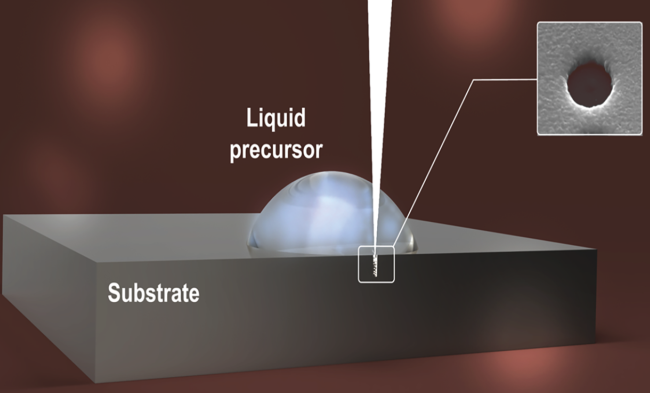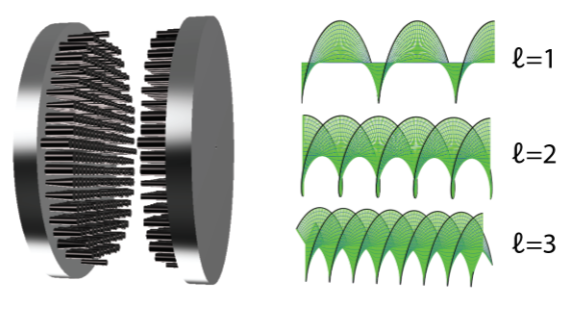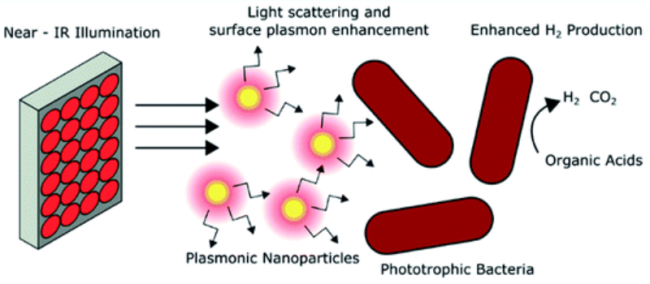About
Principle Investigator
The Hastings Research Group studies nanoscale materials and devices, particularly magnetic and photonic systems, along with their associated nanomanufacturing technologies. Current efforts are focused on applications in optical sensing, imaging, materials characterization, and unconventional computing.
NEWS
Enhancing Contrast and Resolution for Electron-Beam Lithography on Insulating Substrates
October 31, 2025
Report on the effect of ambient gas on the contrast and the resolution of electron beam lithography (EBL) in gaseous environments on insulating substrates. Poly(methyl methacrylate) (PMMA) films were exposed in an environmental scanning electron microscope using a 30 keV electron-beam under 1 mbar pressure of helium, water, nitrogen, and argon.
New paper on Mixed Delay/Nondelay Embeddings Based Neuromorphic Computing with Patterned Nanomagnet
March 27, 2025
Previous works demonstrated methods to physically probe the magnetization dynamics of PNAs to realize neuromorphic reservoir systems that exhibit chaotic dynamical behavior and high-dimensional nonlinearity. Our research addresses the shortcomings of earlier studies, and present a mixed delay/nondelay embeddings-based PNA reservoir system. Our analysis shows that when these mixed delay/nondelay embeddings are used to train a perceptron at the output layer, our reservoir system outperforms existing PNA-based reservoir systems. This article was first presented in 2024 IEEE International Conference on Rebooting Computing (ICRC). The full article can be found at https://ieeexplore.ieee.org/document/10937021
New paper in Applied Optics examines how to improve and enhance color
March 14, 2025
Conventional cameras benefit from an alternative RGBW arrays by responding with higher sensitivity in low light and and low color error. Finding the correct metafilters to enable simultaneous focusing and filtering is examined by new researcher Alex J. Thuringer along with Dr. J. Todd Hastings and Dr. Mansoor A. Sultan in the article, Metasurface color filter arrays with a high efficiency and low color error published in the January 20, 2025 issue of Applied Optics. The full article can be found at https://doi.org/10.1364/AO.541031
New paper in Physical Review B describes how to use x-ray orbital angular momentum to probe nanoscale magnets.
July 22, 2024
This article reviews the generation and applications of orbital angular momentum beams in the x-ray and extreme ultraviolet regime. Several recent works that exploit the orbital angular momentum degree of freedom and showcase the potential advantages of using these beams are presented. The full paper can be found at https://iopscience.iop.org/article/10.1088/1361-648X/ad53b3/meta.
New paper in Communications Materials describes antiviral membrane.
May 24, 2022
A collaboration involving the Hastings' group recently published results describing a new antiviral membrane filter. The effort, led by Dr. Bhattacharyya in U.K.'s Department of Chemical and Materials Engineering, showed that the new membrane can capture aerosols and deactivate the spike protein of the SARS-CoV-2 virus. It also showed good breathability and resistance to fouling making it suitable for both mask and indoor air filtration applications. The full article can be found at https://doi.org/10.1038/s43246-022-00256-0
New paper in Optics Letters describes Zoom Metalens
August 17, 2021
UK graduate Students Fatih Balli and Mansoor Sultan recently published their work on variofocal ("zoom") metalenses in Optics Letters. Metalenses replace traditional bulky glass optics with thin, lightweight, patterned surfaces. The metalens discussed in this paper consists of two "flat" optical elements whose mutual rotation allows the focal length to be adjusted. The metalenses were fabricated using two-photon lithography, a type of nanoscale 3D printing. The work represents a first step toward building ultrathin, lightweight zoom lenses for mobile applciations. The paper, entitled "Rotationally tunable varifocal 3D metalens," can be found at https://doi.org/10.1364/OL.426661.
New paper in Physical Review Letters highlighted in Physics Magazine
March 15, 2021
Postdoc Justin Woods and former postdoc Xiaoqian Chen's work, "Switchable X-Ray Orbital Angular Momentum from an Artificial Spin Ice," just appeared in Physical Review Letters. The paper was also highlighted in Physics Magazine in a Viewpoint article entitled "Switching the Twist in X Rays with Magnets." The research was conducted by a collabortive team from U.K.'s Electrical and Computer Engineering and Physics departments along with Lawrence Berkeley, Argonne, and Brookhaven National Laboratories. So called “twisted” X-ray beams carry orbital angular momentum (OAM) and hold great promise for imaging and probing materials at the nanoscale. In this work, we showed that a patterned array of nanoscale magnets, an artificial spin ice (ASI), can impart OAM to X-ray beams and that the beams can be switched on and off with temperature and magnetic field. The research opens the possibility of using ASIs as reconfigurable X-ray optics, and switchable X-ray OAM beams could provide new tools for studying magnetic materials.
New paper in Nanophotonics describes visible-to-near infrared metalens
January 25, 2021
U.K. graduate students Fatih Balli and Mansoor Sultan just published their work on "flat optics" in Nanophotonics. Their paper, "An Ultrabroadband 3D Achromatic Metalens," describes lenses 50 times thinner than a human hair. The lenses image with light ranging from blue (450 nm) to the short-wave infrared (1700 nm). The compact size, light weight, and mass manufacturabilty of metalenses make them ideal for mobile and airborne imaging. The broadband capabilities of this lens are particularly well suited to emerging visible-to-short wave infrared camera technology.
New paper published in Optics Letters
January 8, 2021
Graduate students Mansoor Sultan and Fatih Balli, along with professors Lau and Hastings, recently published their work describing metasurfaces that can simultaneously focus and filter light. These novel nanostructured optics may find application in imaging, spectroscopy, communications, or optical trapping. The work appears in Optics Letters (https://doi.org/10.1364/OL.410080) and was supported by the National Science Foundation and Intel Corp.
New paper published in the International Journal of Hydrogen Energy
January 7, 2021
Post-doctoral scholar Yuxia Ji (ChemE) and Ph.D. student Mansoor Sultan (ECE) recently published their work on clean hydrogren production from waste organic acids. The effort combined photo-active bacteria, near-infrared illumination, and plasmonic nanoparticles and quantified hydrogen and CO2 production rates and efficiencies. Professor Bhattacharyya (ChemE) led the research team which also included Professors Kim (Chemistry) and Hastings (ECE). The work was conducted in collaboration with and through the support of Southern Company. The research appeared in the International Journal of Hydrogen Energy, and can be accessed at https://doi.org/10.1016/j.ijhydene.2020.11.257.
New e-print on arXiv: Switchable X-ray Orbital Angular Momentum from an Artificial Spin Ice
December 14, 2020
There is rapidly growing interest in X-ray orbital angular momentum (OAM) for imaging and probing materials at the nanoscale. Recently, a team of researchers spanning the University of Kentucky and Lawrence Berkeley, Argonne, and Brookhaven National Laboratories found that X-ray diffraction from an antiferromagnetic (AF) metasurface gives rise to X-ray photons carrying OAM. U.K. graduate student Justin Woods and postdoc Xiaoqian Chen (now at BNL) took leading roles in the effort and just released a preprint of their findings on arXiv (arXiv:2011.10148). The results confirmed several predictions about artificial spin lattices and their interactions with X-ray photons and suggest that AF metasurfaces can underpin designs for reconfigurable X-ray optics.
New paper in Nanotechnology: Real-time dose control for electron-beam lithography
December 9, 2020
Former UK ECE graduate students Yugu Yang and Stephen Maloney recently published their work on "Real-time dose control for electron-beam lithography" in Nanotechnology. Electron-beam lithography is the primary patterning technique for integrated circuit mask making and low-volume manufacturing of nanoscale devices. The electron dose controls the critical dimensions of transistors and other nanoscale features. This paper describes the first step toward controlling this dose in real-time during patterning by using a fluorescent layer on the substrate. The paper can be found at https://doi.org/10.1088/1361-6528/abcaca.
New e-print on arXiv: Hybrid Metasurfaces for Simultaneous Focusing and Filtering
September 17, 2020
UK graduate students Mansoor Sultan and Fatih Balli recently released an e-print of their paper "Hybrid Metasurfaces for Simultaneous Focusing and Filtering." The paper described nanostructured, "flat" optics that simultaneously focus and filter light. Similiar devices could find application in conventional or hyperspectral imaging. The paper can be found at https://arxiv.org/abs/2009.07407.
National Nanotechnology Coordinated Infrastructure Award renewed for Kentucky Multiscale
August 24, 2020
The Kentucky Multiscale site of the National Nanotechnology Coordinated Infrastructure program was recently awarded a five year renewal by the National Science Foundation. Kentucky Multiscale is a consortium of shared facilities at the University of Louisville and the University of Kentucky that provide cutting-edge instrumentation and expertise in advanced manufacturing and characterization from the nanoscale to the macroscole. The award enables expanded access to the facilities along with a broad range of educational and outreach activities focused on nanoscale science and engineering. Professor Kevin Walsh from the University of Louisville serves as the prinical investigatator on the award while Professor Hastings serves as the partner site co-PI at the University of Kentucky. The full announcement can be found at NSF's website.
New paper in Nature Communications: A Hybrid Achromatic Metalens
August 4, 2020
U.K. graduate students Fatih Balli, Mansoor Sultan, and Sarah Lami just published their work on "flat optics" in Nature Communications. Their paper, "A Hybrid Achromatic Metalens," describes lenses between 10 and 50 times thinner than a human hair. The lenses image with light spanning a broad range of wavelengths in the near infrared. The compact size, light weight, and mass manufacturabilty of metalenses make them ideal for mobile and airborne imaging, as well as for integration with optoelectronic systems for communications, computing, and medical diagnostics.
Autovision 2020 to highlight Advanced Manufacturing Resources at the University of Kentucky and Louisville
August 1, 2020
The Autovision 2020 conference, hosted by the Kentucky Association of Manufacturers, will present a session on accessing advanced manufacturing resources at Kentucky Universities. This will include highlights from several Ky Multiscale NNCI cores and a panel discussion. The session is at 2pm on August 27, and Dr. Hastings will join the discussion with colleagues from UofL. More details can be found at the Autovision 2020 website.
Research from Hastings and De Long groups featured in Science Briefs from Lawrence Berkeley National Laboratory's Advanced Light Source
July 31, 2020
Lawrence Berkeley National Laboratory's Advanced Light Source recently featured work from Dr. Hastings' and Dr. De Long's research groups in their "Science Briefs." UK ECE postdoc Xiaoqian Chen and UK Physics graduate students Barry Farmer and Justin Woods took leading roles the effort which studied new phenomena in nanofabricated magnetic systems. The work was supported by the U.S. Department of Energy under Award Number DE-SC0016519.
Recent Ph.D. graduate Sarah Lami publishes work on electron-beam induced etching in Nanotechnology.
June 29, 2020
Recent U.K. ECE Ph.D. graduate Sarah Lami has published an article entitled "Nanoscale focused electron beam induced etching of nickel using a liquid reactant" in the journal Nanotechnology. The research, which introduces a new method for prototyping and repairing nickel nanostructures, was conducted in collaboration with Amrit Kahple (U.K. Physics), Nicolas Briot (U.K. Electron Microscopy Center), and Aurelien Botman (Thermo Fisher Scientific).
Graduate Students Sultan and Balli to present at SPIE Optics+Photonics
May 20, 2020
U.K. graduate students Mansoor Sultan and Fatih Balli will present their work on "flat" optics at the SPIE Optics+Photonics meeting in August. Their abstracts can be found on the SPIE conference website.
"3D printed color focusing filters," Mansoor A. Sultan, Fatih Balli, Daniel L. Lau, J. Todd Hastings
"Rotationally tunable polarization-insensitive metasurfaces for generating vortex beams," Fatih Balli, Mansoor Sultan, J. Todd Hastings
New NSF RAPID Award
May 1, 2020
Motivated by the COVID-19 pandemic, the Hastings group has joined a new collaboration led by Dr. Bhattacharya (UK Chemical Engineering) to address the need for more breathable, antiviral masks. See the UK Engineering news article for more information. The research is supported by a new NSF award "RAPID: Antiviral Functionalized Membrane Mask and Nanostructured Materials for Corona Virus Capture and Deactivation."
New paper in RSC Advances: Rhodopseudomonas palustris-based conversion of organic acids to hydrogen using plasmonic nanoparticles and near-infrared light
December 13, 2019
UK ECE graduate student Mansoor Sultan has just published a paper in collaboration with the Bhattacharyya (UK Chemical Engr.) and Kim (UK Chemistry) groups. The paper addresses a new approach to clean energy production from waste streams using phototrophic bacteria and plasmonic nanoparticles. The full paper can be found at https://doi.org/10.1039/C9RA08747H.
New paper in Physical Review Letters: Spontaneous Magnetic Superdomain Wall Fluctuations in an Artificial Antiferromagnet
November 6, 2019
UK ECE postdoc Xiaoqian Chen and UK Physics graduate students Justin Woods and Barry Farmer have published a new paper in Physical Review Letters entitled "Spontaneous Magnetic Superdomain Wall Fluctuations in an Artificial Antiferromagnet." The work was carried out in collaboration with researchers at Lawrence Berkeley National Laboratory, Argonne National Laboratory, and Brookhaven National Laboratory. The effort used resonant, coherent soft X-ray scattering to study the behavior of nanomagnets in an artifical spin system. The full paper can be found at https://doi.org/10.1103/PhysRevLett.123.197202.
New e-print on arXiv: A Hybrid Achromatic Metalens
September 17, 2019
UK Physics student Fatih Balli and UK ECE graduate students Mansoor Sultan and Sarah Lami have submitted an e-print entitled "A Hybrid Achromatic Metalens' that is currently under review for publication. The paper presents a new approach to designing and fabricating "flat" optics that can focus and image over a broad range of near-infrared wavelengths. The full paper can be found at https://arxiv.org/abs/1909.07941
New paper in Nanoscale: The radiation chemistry of focused electron-beam induced etching of copper in liquids
June 6, 2019
UK ECE graduate students Sarah Lami and Gabriel Smith, along with former Paul Lawrence Dunbar High School researcher Eric Cao, have just published a new paper related to nanoscale rapid prototyping and integrated circuit edit. The full paper can be be found at https://doi.org/10.1039/C9NR01857C
New paper in Nanotechnology: Altering the radiation chemistry of electron-beam lithography with a reactive gas: a study of Teflon AF patterning under water vapor
May 1, 2019
UK ECE graduate students Mansoor Sultan and Sarah Lami, along with collaborators in UK Physics, have published a new paper in Nanotechnology entitled, "Altering the radiation chemistry of electron-beam lithography with a reactive gas: a study of Teflon AF patterning under water vapor." The paper addresses a new approach to electron-beam lithography in which the exposure process is altered by the presence of water vapor. The full paper can be found at https://doi.org/10.1088/1361-6528/ab16f7.
Enhanced patterned fluorescence from polystyrene through focused electron beam irradiation under various gases
November 25, 2025
A novel method for tuning and enhancing fluorescence from irradiated polystyrene through focused electron-beam exposure in gaseous environments. We describe the effect of electron dose and ambient gas on the photoluminescence (PL) spectra and yield of irradiated polystyrene films on insulating and conductive substrates.
For the full article, click here.

